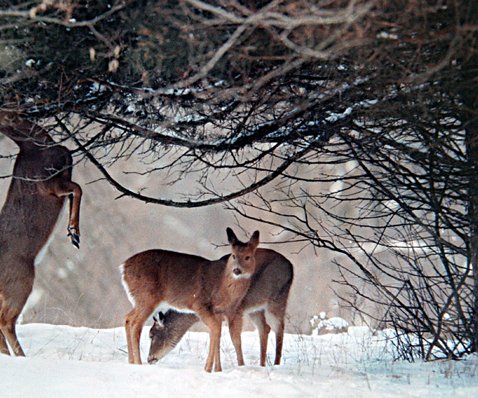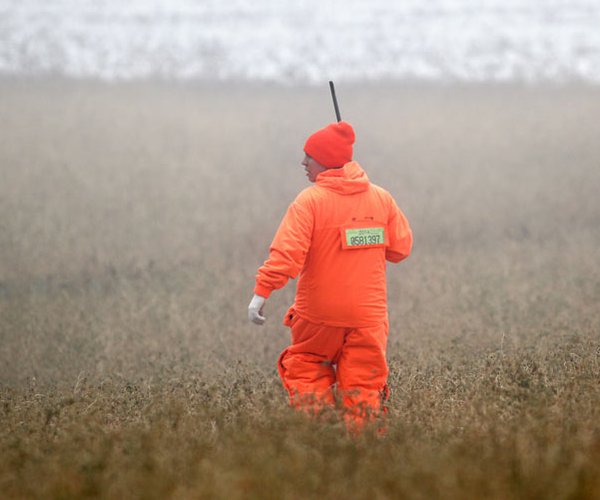Much of the plant material we consume is fruit-related flowers, fruits, and seeds of a plant’s life cycle. In addition to feeding us, these energy reservoirs feed wildlife of all proportions, including hummingbirds taking nectar from flowers to black bears and deer consuming seeds and fruits, even flowers, of wild fruits and farm fields.
Lastly, the fruits, and seeds within, are really not produced for us but for the plant’s own reproduction of the next generation; more chestnut trees and hickory trees.
It’s understandable, then, that animals, including us, are anxious and inquisitive enough to scout and anticipate the volume of foods, particularly what we commonly call nuts.
Will 2024 be a good hard mast year? Are the white oaks loaded to the point deer will be standing and feeding within the dripline of an open grown oak or a roadside shagbark hickory?
In general, 2024 autumn is approaching an abundant autumn for black walnut fruits, shagbark hickory seeds, yellowbud hickory seeds, and most of the smaller seeds that feed rodents, birds, and ants.
It is a too early to assess the red oaks with their two year acorn cycle. Gary Howards, an all-around outdoorsman from Oregon, Wisconsin, said black oaks in his yard and nearby woods are littering the ground with pea-size acorns, oak nuts that for one reason or another are being shed well before their climax.
This acorn drop could be due to stress caused by a spongy moth invasion preceding another leaf development, therefore being short of energy to finish off last year’s acorn start. Or the tiny fruits may be those of this spring, dropped for the same reason. Are two poor acorn years ahead?
White oaks do their thing in one year and Doug Williams, for D W Sports Center in Portage recommends archers and fall turkey and squirrel hunters to find their favorite white oak and sit until the animals come for oak nuts. (Acorns are true nuts, while hickory and walnuts are, botanically drupes.)
Black walnuts look grand, as do the few white walnuts (butternuts) that remain having survived the fungal disease that took most mature trees years ago.
While Wisconsin was and is out of American chestnut’s natural range, a number of trees have been planted, or re-sprouted in one form or another following chestnut blight. Few will be roasted by the fire come Christmas, but the novelty of seeing a chestnut leaf, bur with 3-4 seeds, will be exciting this October.
We will continue to use hard mast seeds for what the tree intended, including planting seeds for future seedlings.
Not everyone wants to bother cracking and picking nut meats from hickory nuts, but some still do and find the task refreshing, energizing, and hunger-satisfying.
Hickory nuts are inexpensive bird and squirrel winter feed. Simply pick the nuts, store in a dry basement, and hammer a nut once or twice and toss it on a platform feeder or shoveled spot of lawn or garden.
Every spec of nut meat will be picked clean. Repeat daily, or until the nuts run out.
Blackberry soft mast is not as abundant as raspberries were, but this fruit should be valued, too. Tom Howard, a retired WDNR wildlife biologist, developed a pancake hike to get hungry young naturalists accustomed to swatting mosquitoes, picking ticks, and eating what nature provides.
“I take eight-year-old kids, giving each a plastic cup and hiking a quarter mile where there are blackberries to pick,” he said. “I pack a tiny white gas Coleman stove, pancake batter, fried bacon, a griddle and have the kids toss the fruit they picked on top of the cooking pancakes.”
This has been such a success that some of these kids, now 40, have kids of their own and want Howard to take their children on a pancake hike.
Howard is finding golden oyster mushrooms abundant and snips the fungi off one by one, and puts them in a gallon bucket. This eliminated extensive cleaning after arriving home.
Limits of bluegills are still being caught in places; prairies continue to put on flower displays; fawns are showing fewer spots while running races with one another; buck antlers are still growing; ghost plants are flowering (the entire plant is white); and ginseng berries are turning red.
Without abundant fruit, autumn gathering at any level would be, well, fruitless.
— Jerry Davis is an Argyle native and a freelance writer who lives in Barneveld. He can be reached at sivadjam@mhtc.net or at 608-924-1112.





